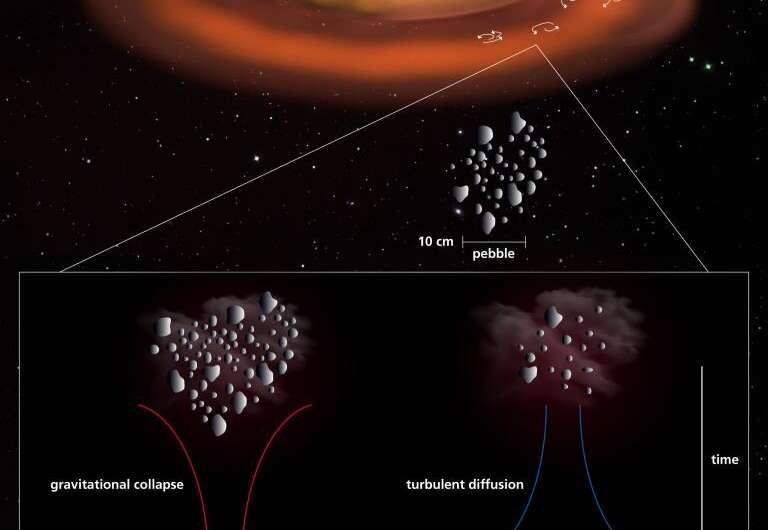Why primordial asteroids that avoided massive collisions all seem to be about the same size

Planetary systems form out of the remnant gas and dust of a primordial star. The material collapses into a protoplanetary disk around the young star, and the clumps that form within the disk eventually become planets, asteroids, or other bodies. Although we understand the big picture of planetary formation, we've yet to fully understand the details. That's because the details are complicated.
Take, for example, the mystery of asteroids and collisions. You would think that planets and asteroids formed gradually: small clumps colliding with others to make bigger clumps. As an object gets bigger, it would be more likely to attract other bodies, and thus be more likely to experience collisions. But as a recent study shows, that isn't always the case with asteroids.
Many asteroids can be grouped into families, groups that are similar in their chemical composition. It's thought that the smaller members of a family likely formed when the parent asteroid collided with another large asteroid. Because of this, you can make a family tree of asteroids, created by collisions in the early solar system. But when the team mapped out the family tree in 2017, they found 17 asteroids with no family. It seems these asteroids had never experienced a large collision. That's interesting, because it means they are still in the primordial state in which they formed.
What's more interesting is that these primordial asteroids tend to have a similar size. The sweet spot seems to be about 100 kilometers in diameter. Primordial asteroids are far more likely to be this size rather than smaller or larger. If asteroids grew gradually in the early solar system, you would expect to find a diverse range of sizes. So why are they almost all the same size?
The answer seems to be turbulence. Turbulence describes the chaotic motion of air that can make a plane trip rough, but turbulence is also seen in the swirl of smoke from a candle, or the ripples of water as flows over stones. In the early solar system, these turbulent swirls would tend to trap dust and rubble into a small region, giving the material time to collapse by gravitational attraction. The team's research shows that turbulent formation, rather than simple collisions, can explain the consistent size of primordial asteroids. Thus, early asteroids formed quickly, setting the stage for the formation of larger planetary bodies.
If this model is correct, it could explain why some asteroids are more like clumps of gravel than a solid body. It could also explain why early collisions between asteroids were so common.
More information: Hubert Klahr et al. Turbulence Sets the Length Scale for Planetesimal Formation: Local 2D Simulations of Streaming Instability and Planetesimal Formation, The Astrophysical Journal (2020). DOI: 10.3847/1538-4357/abac58
Journal information: Astrophysical Journal
Provided by Universe Today




















